Pharos Of Alexandria – One Of The First Lighthouses In The Ancient World
AncientPages.com - The Lighthouse of Alexandria, one of the Seven Wonders of the Ancient World, is also known as the Pharos at Alexandria. Built at the beginning of the 3rd century BC, by the Greek architect Sostratus of Cnidus, for the purpose of guiding sailors into the harbor, it was finished during the reign of Soter’s son Ptolemy II of Egypt in about 280 BC.
It was impressive in its construction and scale, and legends say that its light was visible in the harbor from 35 miles away. There was a mirror on the top of the Lighthouse that was probably made of bronze that reflected the light.

One of the first lighthouses of the Ancient World. Illustration of the Pharos of Alexandria by Maerten van Heemskerck.
The lighthouse was badly damaged in the earthquake of 956, and then two other earthquakes, in 1303 and 1323, which totally devastated the structure.
Between 1994 and 1996, a team of archaeologists led by the French archaeologist Jean-Yves Empereur localized remains of the lighthouse on the floor of Alexandria's Eastern Harbour.
Jean-Yves Empereur said that:
'From the fourth century until the 14th century, there were earthquakes in Alexandria.
According to several the Arab sources alone you have more than 20 mentions of earthquakes, which affected the lighthouse. And we know that in the 14th century, after the Arabs had made some repairs to the lighthouse, the lighthouse collapsed due to very severe earthquakes.
There is a map in Montpelier, a town in southern France, which indicates that in 1303 the lighthouse of Alexandria was destroyed.
In fact, there is an Arab traveler, his name is Ibn Battuta, who came to Alexandria in 1326 for the first time.
And he writes, "I could have access to the door of the first floor of the lighthouse." And when he comes back to Alexandria in 1349, he says, "No access to this door. Everything here has collapsed."

Lighthouse remains found in the Mediterranean Sea. Columns at the underwater museum near the former lighthouse, Alexandria, Egypt. Photo credits: Roland Unger/Wikipedia
So in fact, in the first half of the 14th century that very strong earthquake put an end to this tower,' Empereur explained.
This earthquake made the lighthouse collapse in a kind of line from the seashore. And we found a dozen fallen pieces under the sea in a line. Some of these pieces were in fact broken in two or three fragments, each of which is about 20 or 30 tons.'
According to Greco-Roman archaeology professor Fathy Khourshid, the entire structure of the Lighthouse was approximately 400 feet tall including the base and comprised three stages: a lower square section with a central core, a middle octagonal section and a circular section at its top.
Ancient accounts such as those by Pliny the Elder and Strabo give us a brief description of the "tower" and the magnificent white marble cover.
The white marble tower was between 393 and 450 ft (120 and 137 m) tall and one could see ships located 100 miles far away. It was one of the tallest man-made structures in the world for many centuries.
Angles were decorated with bronze tritons which was used either to warn of the approach of the enemy by terrifying sounds, but also to carry mirrors which, during the night, reflected the light of a fire. In the daytime, the smoke helped the boats to locate the entrance of the port.
The internal core was used as a shaft to lift the fuel needed for the fire.
The lighthouse of Alexandria - the symbol of the technical exploit shown by the Egyptians - was unique and one of the first lighthouses of the Ancient World.
It will be rebuilt close to the original site.
Copyright © AncientPages.com All rights reserved. This material may not be published, broadcast, rewritten or redistributed in whole or part without the express written permission of AncientPages.com
Expand for referencesMore From Ancient Pages
-
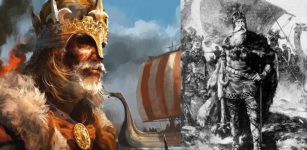 Berserkers: Icelandic Viking ‘Mad Warriors’ In The Army Of God Odin
Featured Stories | Apr 25, 2017
Berserkers: Icelandic Viking ‘Mad Warriors’ In The Army Of God Odin
Featured Stories | Apr 25, 2017 -
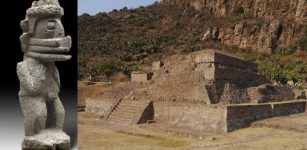 Who Built The Mysterious Huapalcalco Pyramid – Mexico’s Smallest Pyramid?
Featured Stories | Mar 29, 2018
Who Built The Mysterious Huapalcalco Pyramid – Mexico’s Smallest Pyramid?
Featured Stories | Mar 29, 2018 -
 Mysterious Ancient Danube Stone Faces And The Fish Goddess Connection
Artifacts | Dec 18, 2019
Mysterious Ancient Danube Stone Faces And The Fish Goddess Connection
Artifacts | Dec 18, 2019 -
 10 Enigmatic Ancient Underwater Ruins – Our Oceans Are Full Of Secrets
Featured Stories | Aug 13, 2019
10 Enigmatic Ancient Underwater Ruins – Our Oceans Are Full Of Secrets
Featured Stories | Aug 13, 2019 -
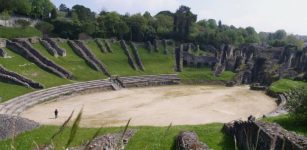 Huge Gallo-Roman Amphitheater Of Saintes Will Be Saved For Future Generations – New Project Started
News | Jan 23, 2021
Huge Gallo-Roman Amphitheater Of Saintes Will Be Saved For Future Generations – New Project Started
News | Jan 23, 2021 -
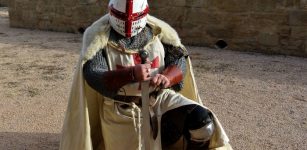 Were The Knights Templar Guilty Or Innocent Of The Crimes Laid Against Them?
Featured Stories | Dec 24, 2020
Were The Knights Templar Guilty Or Innocent Of The Crimes Laid Against Them?
Featured Stories | Dec 24, 2020 -
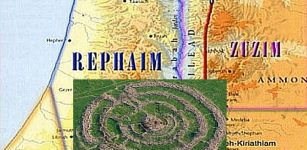 ‘Wheel Of Giants’: Mysterious Complex Of Circles – Prehistoric ‘Stonehenge’ Monument In The Middle East
Featured Stories | Mar 29, 2019
‘Wheel Of Giants’: Mysterious Complex Of Circles – Prehistoric ‘Stonehenge’ Monument In The Middle East
Featured Stories | Mar 29, 2019 -
 Unexplained Mystery Of A Painting That Has Been Labeled ‘Evil’
Featured Stories | Oct 3, 2018
Unexplained Mystery Of A Painting That Has Been Labeled ‘Evil’
Featured Stories | Oct 3, 2018 -
 Circular-Shaped 4000-Year-Old Wooden Henge Discovered In Yorkshire, Historic County of Northern England
Archaeology | Jan 3, 2018
Circular-Shaped 4000-Year-Old Wooden Henge Discovered In Yorkshire, Historic County of Northern England
Archaeology | Jan 3, 2018 -
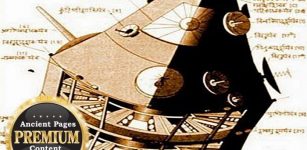 Vimanas – Flying Machines Soaring Through Ancient Sky Of India
Featured Stories | May 27, 2014
Vimanas – Flying Machines Soaring Through Ancient Sky Of India
Featured Stories | May 27, 2014 -
 Our Lives Have Always Been Manipulated By Money – Part 2
Featured Stories | Jun 4, 2022
Our Lives Have Always Been Manipulated By Money – Part 2
Featured Stories | Jun 4, 2022 -
 Devil’s Advocate – Ancient Phrase Traced To The Roman Catholic Church
Ancient History Facts | Nov 19, 2018
Devil’s Advocate – Ancient Phrase Traced To The Roman Catholic Church
Ancient History Facts | Nov 19, 2018 -
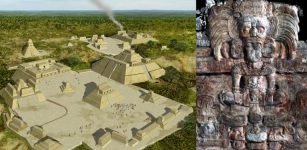 Mysterious Maya Snake Kings And Their Powerful Kingdom In The Jungle Reveal More Ancient Secrets
Civilizations | Apr 23, 2018
Mysterious Maya Snake Kings And Their Powerful Kingdom In The Jungle Reveal More Ancient Secrets
Civilizations | Apr 23, 2018 -
 Fascinating Ancient And Unexplained Mysteries Of Arizona – Secrets Of The Canyons And Mountains – Part 1
Featured Stories | Sep 29, 2024
Fascinating Ancient And Unexplained Mysteries Of Arizona – Secrets Of The Canyons And Mountains – Part 1
Featured Stories | Sep 29, 2024 -
 Remarkable Neanderthal Flute Found In Divje Babe Cave Is The World’s Oldest Musical Instrument
Artifacts | Dec 11, 2023
Remarkable Neanderthal Flute Found In Divje Babe Cave Is The World’s Oldest Musical Instrument
Artifacts | Dec 11, 2023 -
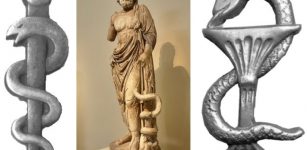 Why Is A Snake Symbol Of Medicine And Pharmacies?
Ancient History Facts | Jan 15, 2018
Why Is A Snake Symbol Of Medicine And Pharmacies?
Ancient History Facts | Jan 15, 2018 -
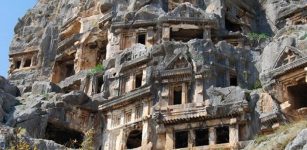 Magnificent Ancient Rock-Cut Lycian Tombs Of Myra, Antalya, Turkey
Civilizations | Aug 9, 2015
Magnificent Ancient Rock-Cut Lycian Tombs Of Myra, Antalya, Turkey
Civilizations | Aug 9, 2015 -
 The Word Freelancer Originates From Medieval Mercenary Knights
Ancient History Facts | Feb 25, 2016
The Word Freelancer Originates From Medieval Mercenary Knights
Ancient History Facts | Feb 25, 2016 -
 Mysterious ‘Las Labradas’ Petroglyphs With Roots In The Pre-Columbian Times Of Mexico
Featured Stories | Oct 9, 2020
Mysterious ‘Las Labradas’ Petroglyphs With Roots In The Pre-Columbian Times Of Mexico
Featured Stories | Oct 9, 2020 -
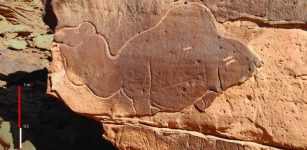 Huge Ancient Animal Sculptures Made By Unknown Carvers At Camel Site In Saudi Arabia Puzzle Archaeologists
Archaeology | Feb 14, 2018
Huge Ancient Animal Sculptures Made By Unknown Carvers At Camel Site In Saudi Arabia Puzzle Archaeologists
Archaeology | Feb 14, 2018


